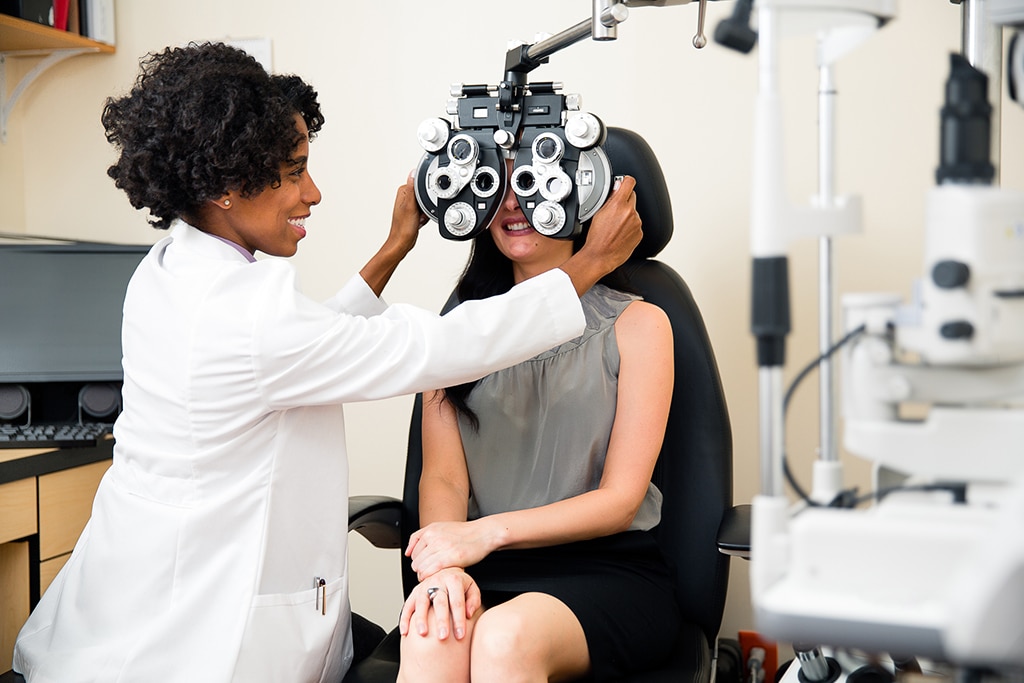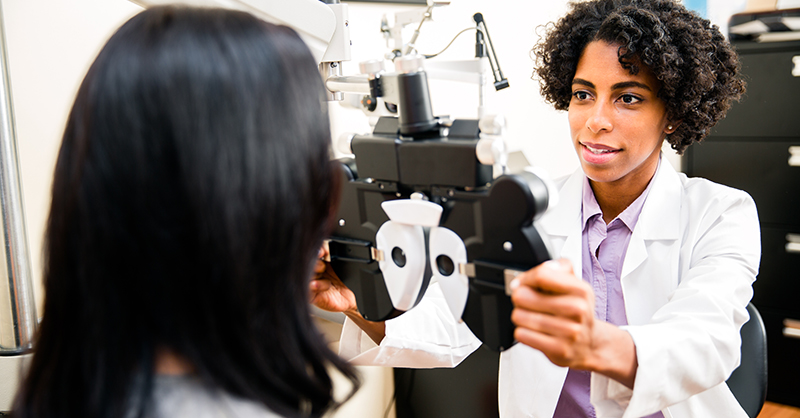Comprehending the Role of Your Eye Doctor in Maintaining Vision
Comprehending the Role of Your Eye Doctor in Maintaining Vision
Blog Article
Discovering the most recent Technological Advancements in Optometry and What They Mean for Eye Doctors
In the ever-evolving field of optometry, current technological innovations are improving how experts come close to eye treatment. From the precision of Optical Comprehensibility Tomography to the nuanced insights supplied by AI-driven diagnostic tools, these innovations are establishing brand-new criteria in client assessment and therapy. Teleoptometry is poised to redefine access, making sure that competence transcends geographical constraints. As these developments penetrate the practice, eye doctors are confronted with the difficulty of welcoming these devices to improve person outcomes. The inquiry remains: exactly how will these technical shifts redefine the roles and responsibilities within the occupation?
Developments in Diagnostic Equipment
Advancing the area of optometry, advancements in diagnostic tools have actually reinvented the method eye care professionals analyze and detect visual impairments and ocular conditions. The previous years has actually seen considerable technological innovations, making it possible for even more comprehensive and accurate evaluations.
Another key technology is the introduction of innovative corneal topography systems, which map the surface curvature of the cornea with accuracy. These tools are especially advantageous for suitable get in touch with lenses and detecting corneal disorders. Digital retinal imaging has actually changed conventional ophthalmoscopy, using detailed, panoramic views of the retina that promote comprehensive visual assessments.
The growth of wavefront aberrometry has also been critical, allowing the analysis of refractive mistakes with unequaled precision (Eye Doctor). This innovation helps in tailoring rehabilitative lenses and boosting medical end results for refractive surgical treatments. Jointly, these analysis innovations encourage optometrists to deliver exceptional client care, guaranteeing early intervention and tailored therapy techniques, eventually enhancing visual wellness end results
AI in Individual Administration
Structure on the foundation of cutting-edge diagnostic tools, the unification of man-made knowledge (AI) in individual administration represents a transformative jump for optometry. AI systems are increasingly employed to boost effectiveness, precision, and personalization in client treatment.
Additionally, AI-driven platforms help with streamlined person interactions and management processes. Automated organizing, digital examinations, and personalized follow-up plans not only enhance person fulfillment but also enhance time monitoring for specialists. These systems can triage clients based upon the urgency of their problems, making certain that those in essential requirement obtain punctual attention.
Moreover, AI boosts decision-making by supplying optometrists with evidence-based referrals and treatment pathways. By integrating information from digital wellness documents, AI tools offer insights that notify scientific choices, lowering the risk of errors and improving client end results. As AI proceeds to evolve, its role in patient management will likely broaden, reshaping the landscape of optometric care.
Advancements in Retinal Imaging
In the world of optometry, retinal imaging has experienced exceptional technical improvements that are boosting analysis capacities and individual treatment. Advancements such as Optical Coherence Tomography (OCT) and fundus photography have actually changed just how eye doctors evaluate the retina and imagine. OCT, specifically, gives high-resolution, cross-sectional pictures of the retina, enabling the comprehensive assessment of its layers. This capacity is invaluable for very early discovery and administration of conditions like glaucoma, diabetic person retinopathy, and age-related macular deterioration.
Improved imaging methods like OCT angiography are more refining analysis precision. This non-invasive technique maps blood circulation in the retina, providing important insights right into vascular health and wellness without the need for dye shots. Furthermore, adaptive optics technology is being incorporated into retinal imaging systems to correct eye aberrations, providing unprecedented photo clearness. Such advancements assist in the identification of minute pop over here retinal changes that might indicate illness development.
In addition, advancements in fabricated intelligence are increasing retinal imaging by making it possible for automated analysis of big datasets. These systems aid eye doctors in determining patterns a sign of pathology, thereby improving analysis precision and efficiency. Collectively, these advancements are changing retinal imaging right into a foundation of modern-day eye care, improving end results and expanding healing opportunities.
Teleoptometry's Expanding Function
Teleoptometry is progressively becoming a vital part of eye treatment, driven by developments in electronic interaction and analysis tools. This is specifically helpful in underserved and rural areas where access to specialized eye treatment is often minimal.
The combination of expert system (AI) additional improves teleoptometry, allowing the evaluation of visual data and helping in the detection of ocular problems such as glaucoma and diabetic retinopathy. AI-powered algorithms can swiftly analyze complex imaging data, supplying optometrists with beneficial understandings that reinforce professional decision-making.
Furthermore, teleoptometry supports connection of treatment via smooth combination with electronic health records (EHRs), enabling eye doctors to keep detailed person histories. When consulting with different professionals., this makes certain that people receive personalized and constant treatment also.
Regardless of these benefits, obstacles remain, consisting of guaranteeing information security and taking care of individual assumptions. Teleoptometry stands for a considerable stride towards more available, effective, and patient-centered eye care. As innovation develops, its role is poised to broaden additionally.

Future Fads in Eye Treatment
A myriad of cutting-edge trends is readied to reshape the future of eye treatment, driven by technological innovations and the advancing needs of patients. One considerable pattern is the integration of man-made intelligence my company (AI) in diagnostics, which guarantees to boost the accuracy and performance of eye evaluations. AI formulas can assess large amounts of information from retinal pictures, potentially identifying problems like diabetic retinopathy and glaucoma earlier than conventional methods.
Additionally, individualized medication is acquiring traction in optometry, with genetic screening informing tailored therapy strategies. This strategy aims to optimize client results by tailoring interventions to specific hereditary profiles. Wearable innovation, such as clever call lenses, is also coming up, using real-time monitoring of intraocular pressure or sugar levels, hence supplying continuous insights right into eye and systemic health.
The fostering of augmented truth (AR) and online fact (VR) in training and patient education is an additional arising pattern. These modern technologies supply immersive experiences that can enhance understanding and skills both for clients and optometrists. As these trends advance, optometrists should remain abreast of technical developments to provide advanced treatment, ensuring enhanced patient outcomes and fulfillment in the dynamic landscape of eye treatment.
Verdict

Jointly, these analysis developments empower eye doctors to deliver premium client care, ensuring early treatment and customized therapy approaches, ultimately improving visual health end results.

As these modern technologies proceed to develop, eye doctors need to adapt and integrate them into technique, inevitably optimizing operations efficiency and raising the criterion of eye treatment supplied to patients.
Report this page